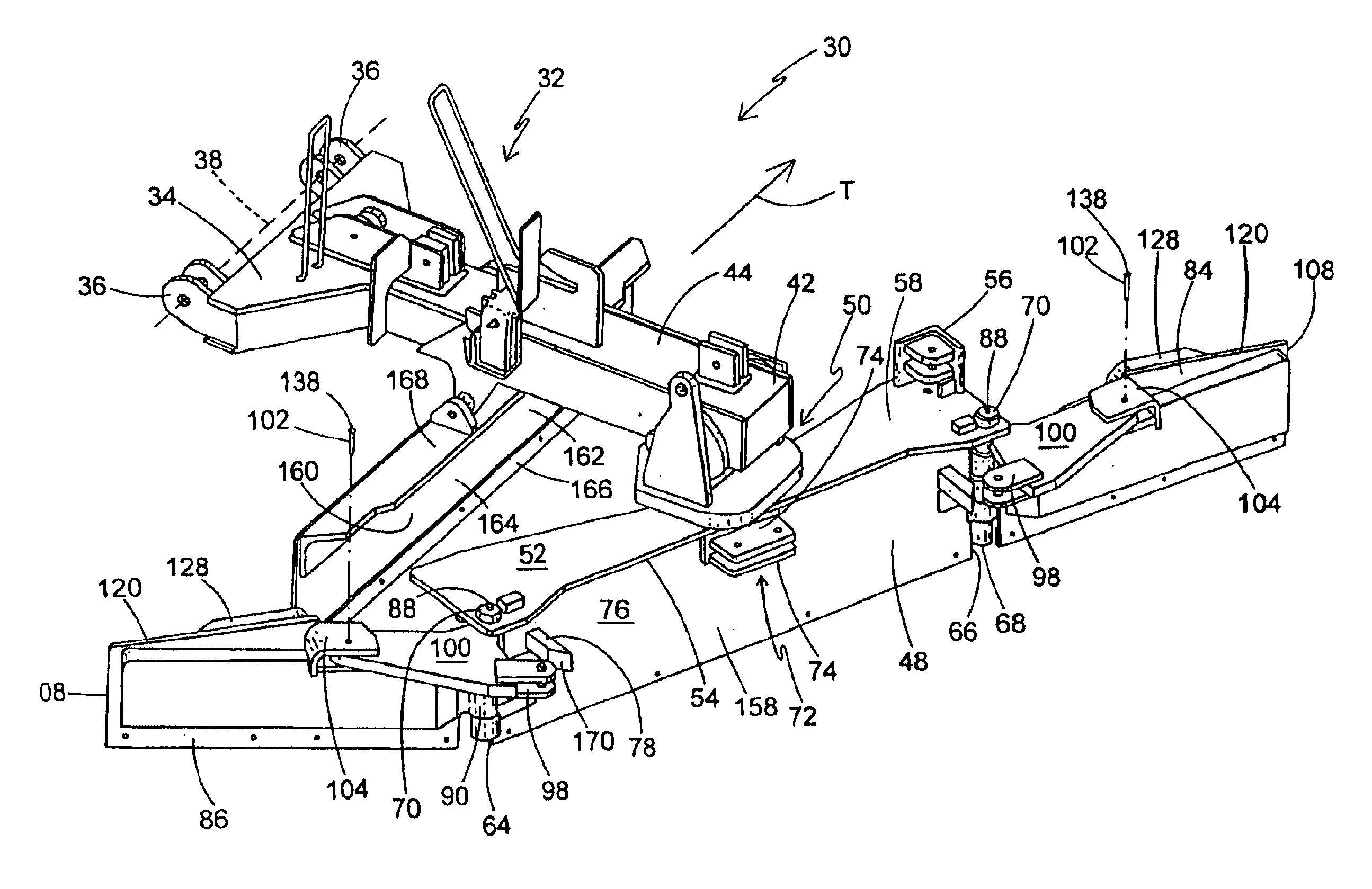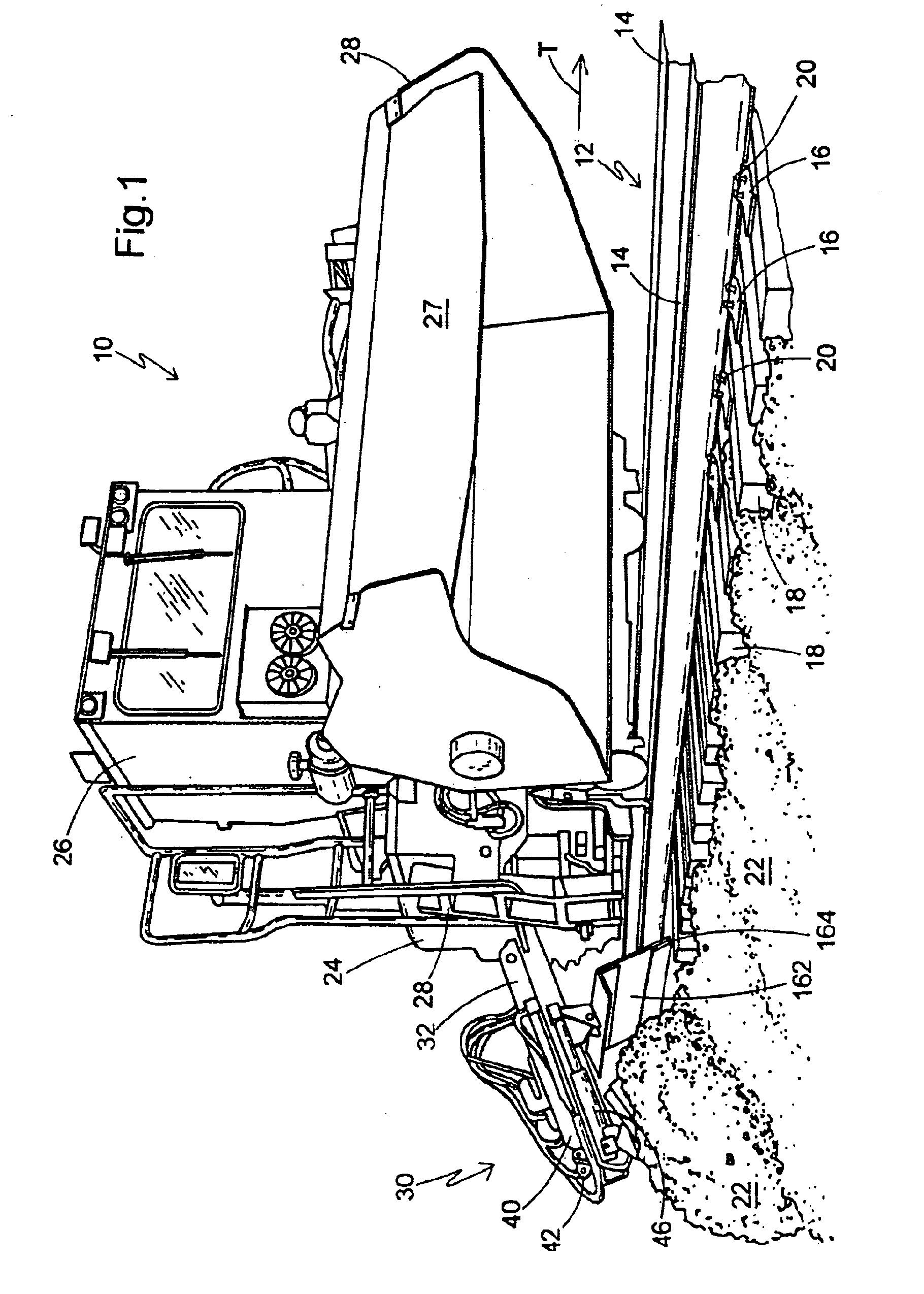Template door and wing assembly with break-away feature for rail ballast regulator
a technology of ballast regulator and wing assembly, which is applied in the direction of snow cleaning, tilling equipment, roads, etc., can solve the problems of ballast disruption, wing assembly often encountering debris or fixed objects, and requiring re-positioning, so as to achieve convenient re-positioning and greater reliability
- Summary
- Abstract
- Description
- Claims
- Application Information
AI Technical Summary
Benefits of technology
Problems solved by technology
Method used
Image
Examples
Embodiment Construction
[0020]Referring now to FIG. 1, a railroad ballast regulator, generally designated 10, is shown disposed on a railroad track 12 having a pair of rails 14 mounted on tie plates 16 which are attached to typically wooden ties 18 by fasteners 20 such as rail spikes, lag screws or the like. The ties 18 are supported by particulate ballast 22, which is typically made of crushed rock.
[0021]The regulator 10 is preferably self-propelled through a power source 24 such as a diesel engine, but it is also contemplated that the machine could be towed along the track 12. An operator's cab 26 includes a control panel and other operator inputs (not shown) which are used to control the movement of the regulator 10 along the track 12, as well as the ballast regulating functions which will be described below. A broom 27 is preferably disposed at a rear of the regulator 10 for sweeping ballast 22 from the tops of the ties 18. Each of two sides 28 of the regulator 10 is preferably provided with a rail bal...
PUM
 Login to View More
Login to View More Abstract
Description
Claims
Application Information
 Login to View More
Login to View More - R&D
- Intellectual Property
- Life Sciences
- Materials
- Tech Scout
- Unparalleled Data Quality
- Higher Quality Content
- 60% Fewer Hallucinations
Browse by: Latest US Patents, China's latest patents, Technical Efficacy Thesaurus, Application Domain, Technology Topic, Popular Technical Reports.
© 2025 PatSnap. All rights reserved.Legal|Privacy policy|Modern Slavery Act Transparency Statement|Sitemap|About US| Contact US: help@patsnap.com



